REDi Island: Renewable Energy Discovery Island
NREL offers an educational virtual world powered entirely by renewable energy to show applications for marine energy and hydropower technologies.
REDi Island App
Explore the U.S. Department of Energy's REDi Island web application.
Have a question or comment about REDi Island? Let us know.
Imagine a world where rivers, tides, and waves help power our communities, monitor our environment, and provide clean drinking water. Or better yet, explore that world through the Renewable Energy Discovery (REDi) Island web application.
What Is Renewable Energy Discovery Island?
REDi Island's virtual, renewable-energy-powered world is home to more than a dozen water power waystations. If you're curious about climate change, clean energy, or the vast power flowing in the world's rivers and oceans, then REDi Island is for you.
The REDi Island mission is to:
- Engage in clean energy science
- Educate tomorrow's energy innovators
- Inspire a renewable energy revolution.
Teachers can incorporate this virtual exploration tool into courses on climate change, renewable energy, and more. Students from elementary through graduate school can discover the many exciting careers available in water power. Anyone can learn what water power could do for their communities—from remote, coastal, or island villages to farmlands and even urban hubs.
REDi Island is part of NREL's water power outreach and education efforts to support the next generation of the renewable energy workforce in hydropower and advance the future of marine energy. The lab's water power researchers, who advance research and development of the kind of marine energy and hydropower technologies depicted in these videos, helped explain the basic science behind how the ocean and river works to power REDi Island.
Created by NREL, the REDi Island initiative is fully funded by the U.S Department of Energy Office of Energy Efficiency and Renewable Energy's Water Power Technologies Office and developed by IKM 3D's three-dimensional visualization and software development specialists.
Explore REDi Island
Watch as farms grow food with power from river currents; explore a city that runs on clean, steady hydropower; and see how ocean waves provide energy to purify water, ramp up research, and protect vulnerable ecosystems. Explore the playlist to start your REDi Island journey at one of the water-powered waystations described below.
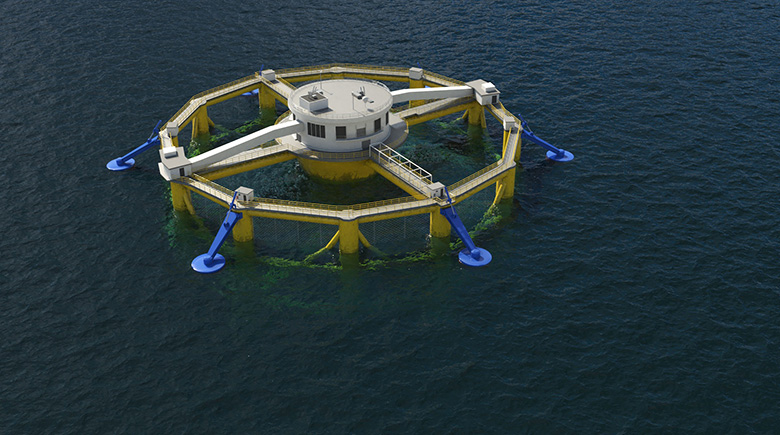
REDi Island's Aquaculture Arena. Visualization from IKM 3D
About 3 billion people around the world depend on fish, either wild-caught or farmed. Yet many offshore fish farms still get their energy from fossil fuels, which can come with high costs and carbon emissions. Such fuels must be shipped to offshore farms from the mainland, which contributes to climate change and ultimately impacts the health and wellbeing of all marine wildlife, including fish.
But a solution already surges within those offshore farms. At REDi Island’s Aquaculture Arena, wave energy converters capture the power of ocean waves to generate electricity. With that local, clean power, these farms can feed and care for their fish, shellfish, or algae while protecting the ocean—and the planet—at the same time.
Visit Aquaculture Arena to find out how marine energy can power the future of sustainable seafood.
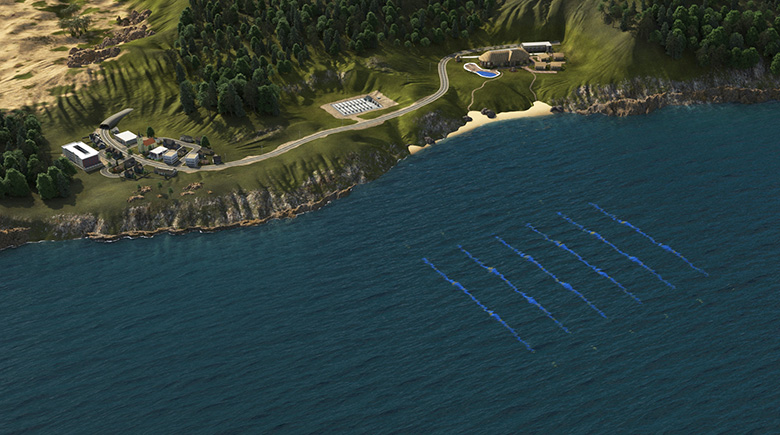
REDi Island's Bulge Wave Boulevard. Visualization from IKM 3D
When a snake swallows a big meal, a prey-shaped bulge slowly squeezes down its slender body. A bulge wave energy converter works in much the same way. These long, slender devices could be installed in parallel rows just offshore. As a wave surges past the sea-snake-like tech, it creates a bulge of energy that slowly creeps along the device’s flexible body. And that body houses many individual energy converters that transform the bulge into usable electricity.
On REDi Island, Bulge Wave Boulevard generates clean energy from ocean waves and stores that energy in onshore batteries. These energy reserves can provide backup power for remote, rural, and coastal communities or even big urban centers. If other energy sources can’t keep up with high energy demand, that battery bank can fill the gaps to ensure the power grid is reliable and resilient.
Visit Bulge Wave Boulevard to check out these sea snakes in action.
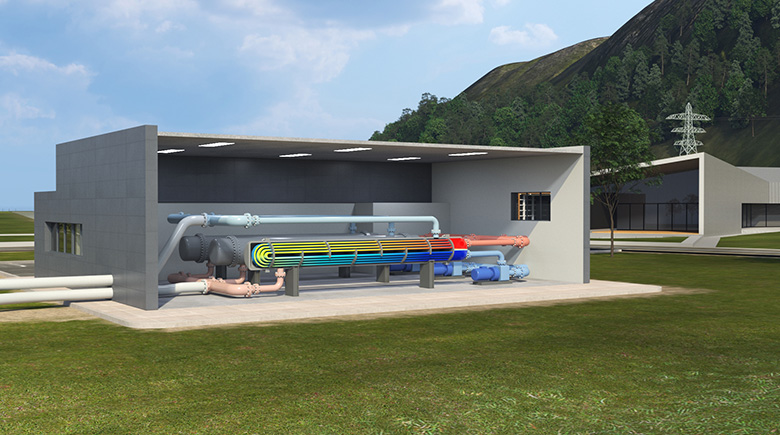
REDi Island's Cooling Concourse. Visualization from IKM 3D
As the climate warms, people will likely depend even more on air conditioners to keep cool. As they do, these room-cooling machines will emit more carbon, potentially compounding climate change and increasing the heat of an already too-warm planet. Luckily, the planet offers a different, carbon-free way of cooling our rooms and bodies: the ocean.
At REDi Island’s Cooling Concourse, an airport terminal uses cold water from the deep ocean to cool its air. The island’s saltwater air conditioning system uses pipes to send water into the ocean depths, which cools it down. Then, as that chilled water loops back through the building, it absorbs heat from the air. Because these systems use a fraction of the energy of conventional air conditioners, they could help us keep our cool and protect the planet, too.
Visit Cooling Concourse to learn how cool seawater can be.
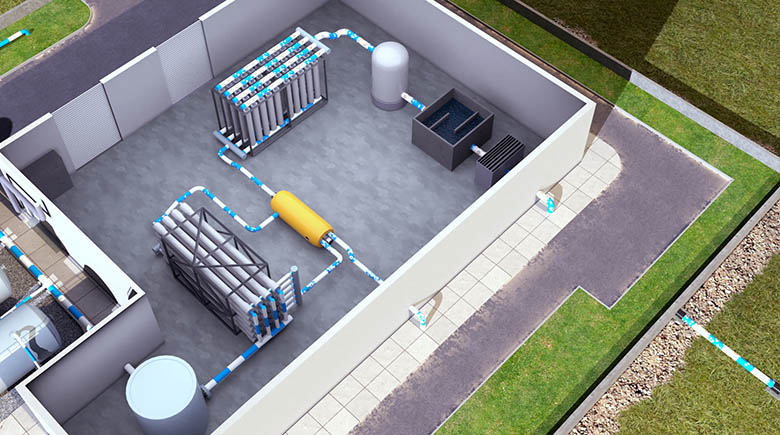
Over the next 10 years, 40 U.S. states expect to see water shortages in at least part of their land. But if traditional sources dry up, drought-stricken areas could lean on nontraditional sources, such as wastewater and salt water, to boost their supplies. To do that, those states will need cost-effective desalination plants, which filter contaminants out of water—often saving energy in the process.
Speaking of energy, some water treatment systems, including REDi Island's Desalination Station, could create drinking water with the clean power from ocean waves. For remote villages, island communities, and disaster recovery areas, wave-powered desalination could be valuable to build resiliency and get vital resources even during a crisis.
Visit Desalination Station to learn more.
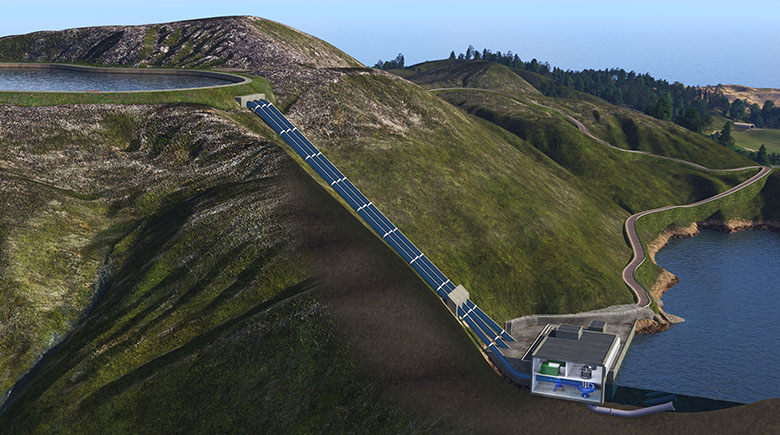
Power failures increasingly affect people across our warming world, shutting off vital air conditioning, air purifiers, and oxygen machines. But one of the world's oldest forms of energy storage, pumped storage hydropower, could help prevent outages caused by heatwaves, hurricanes, or cyberattacks. Plants such as the one at Hydro Heights can help keep clean energy flowing and build more resilient communities.
Pumped storage hydropower plants are made by connecting two reservoirs, one at a higher altitude than the other, and generate power as water moves down from one to the other (discharge), passing through a turbine. The system also requires power as it pumps water back into the upper reservoir (recharge), where it is stored in the upper reservoir for future use. When demand increases, that water is released down through a turbine, which spins a generator and pumps energy back into the grid.
Explore pumped storage hydropower in action at Hydro Heights.
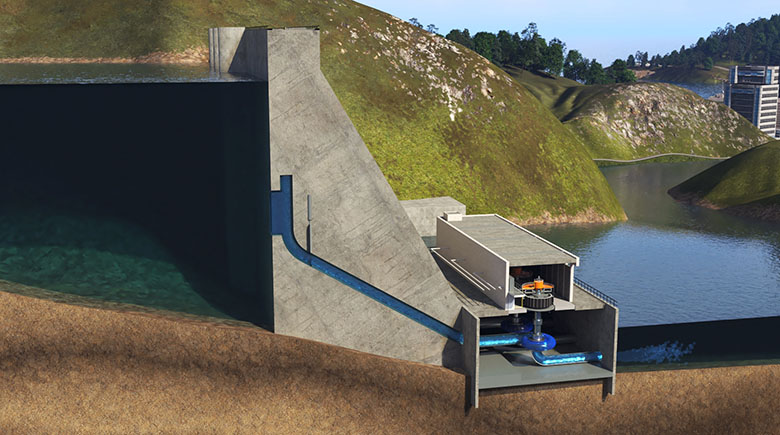
Even century-old technologies, like hydropower, can play a role in a next-generation power grid. In fact, hydropower's flexible, reliable, on-demand energy will be especially valuable for a grid that runs on more variable renewable energy sources, such as solar power and wind energy. When energy demand exceeds supply, hydropower facilities, such as REDi Island's Hydro Hollow, can quickly generate clean energy—at affordable prices, too.
For example, Hydro Hollow's conventional dam can store water until REDi Island's city dwellers need more power. Then, that water is released, spinning a turbine, which runs a generator, sending electricity to the main power grid. Once energy demand slows, Hydro Hollow can rest, reserving water for when it's needed most.
Hydropower may be old, but it's perhaps more necessary than ever. Today, the hydropower industry is growing and adding many well-paying, diverse jobs in manufacturing, utilities, professional and business services, construction, trade and transportation, energy systems, water management, environmental science, welding, machinery, and more.
Visit Hydro Hollow to learn more.
.jpg?sfvrsn=861207c1_1)
REDi Island's Hydrokinetic Haven. Visualization from IKM 3D
Some communities are so remote, they live beyond the reach of major power grids. To power their homes, schools, hospitals, and lives, many of these communities rely on shipments of fossil fuels. But these shipments can be expensive and risky. If a storm waylays deliveries, a remote village could be forced to go without power while they wait for fuel to arrive.
Luckily, even if major grids cannot reach these communities, water can. Rushing rivers, for example, can generate enough power to bridge energy gaps, reduce dependence on fossil fuels, and potentially lower energy costs while increasing a community’s energy independence and resilience. REDi Island’s Hydrokinetic Haven shows how a remote farm can get clean renewable energy from the powerful river flowing nearby.
Visit Hydrokinetic Haven to find out how water power can help communities transition to clean energy, equitably.
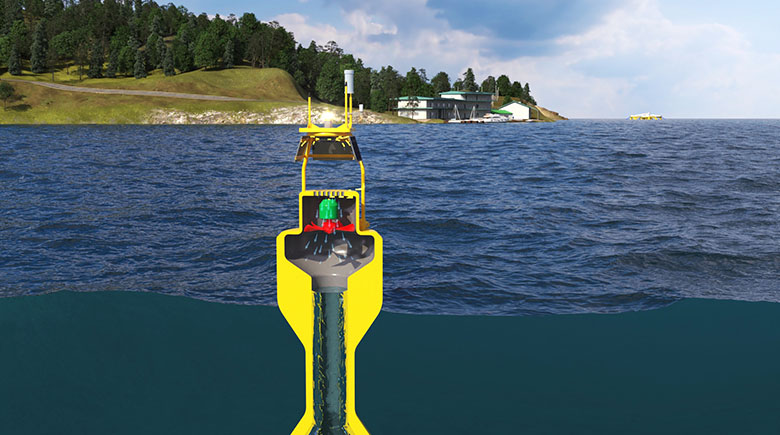
The world's oceans are increasingly used for commerce and recreation. But these waters are also home to about a million species. To promote international trade and shipping while protecting fragile marine ecosystems, we need ocean-bound technologies that can steer vessels away from nautical hazards or protected areas, such as shallow coastal reefs.
As a bonus, these navigation technologies can run on clean ocean energy, too. Bobbing buoys can transform the energy from waves into electricity to power sensors. When those sensors detect a ship, the buoy can send a message to warn the crew of the reef nearby.
Visit Navigation Network to explore this early-warning system in action.
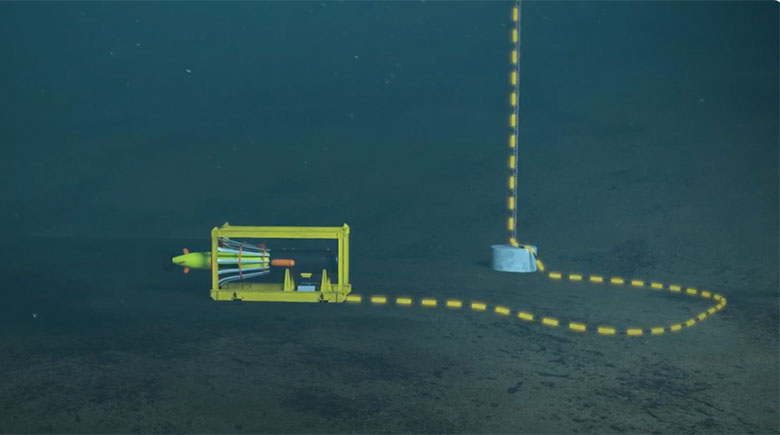
As the planet warms, so will the ocean, causing both known and unknown shifts in this global ecosystem. To monitor the health of ocean waters and their wildlife, marine researchers often rely on underwater drones—also known as autonomous underwater vehicles—which glide through the ocean collecting data. These vehicles can map the ocean floor, explore ship wreaks, record environmental markers, and more. But when these small machines need to juice up, they must either return to shore (expending precious energy and research time) or wait for a boat to travel out to meet them (also expending time and money, plus carbon, too).
At REDi Island’s Power-Up Point, underwater vehicles can dock and power up with clean energy generated from ocean waves. As this floating buoy bobs up and down, it converts wave energy into electricity, which is stored on the seabed. When a vehicle docks at this power station, it can recharge and even transmit its data back to researchers on shore.
Visit Power-Up Point to glimpse the power behind marine research.
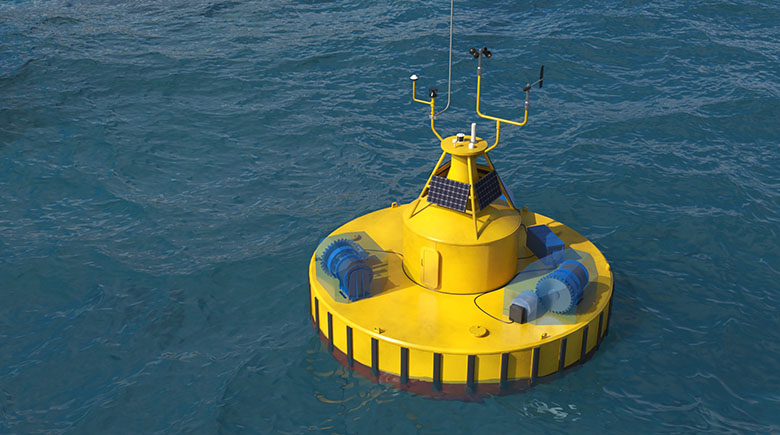
Over 80% of the Earth's oceans are unmapped and rarely monitored. As climate change alters these waters, potentially threatening marine wildlife and creating bigger tropical storms, ocean monitoring is becoming even more important.
At Research Reef, scientists can both study and protect the ocean and our climate with wave-powered ocean monitoring technologies. There, wave energy converters—which transform ocean waves into clean electricity—power sensors that observe everything from above-water atmospheric conditions to below-water ocean environments, helping scientists keep track of the health of wildlife populations and their ecosystems without contributing to climate change.
Visit Research Reef to learn more.
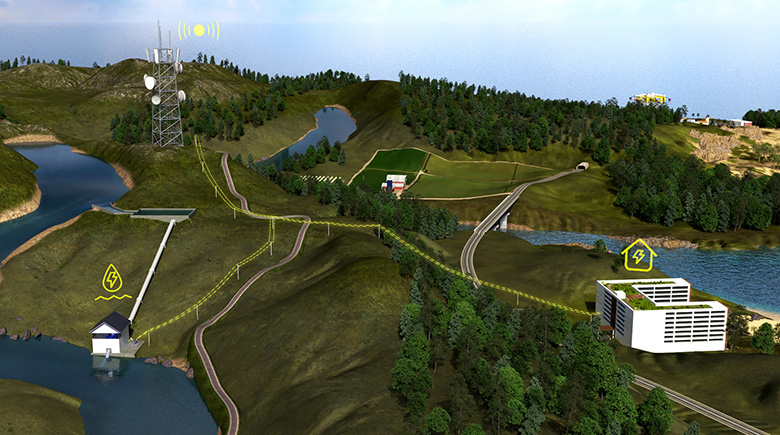
REDi Island's River Ramble. Visualization from IKM 3D
Not all hydropower plants need a dam. Like conventional hydropower facilities, run-of-river systems harness the natural flow of a river’s downhill current. But instead of corralling the river’s main channel, these systems divert part of the river to flow through a separate canal where the water spins a turbine, generating clean electricity.
Like REDi Island’s River Ramble, run-of-river hydropower systems can be built with minimal environmental impacts and in almost any location where a river flows downhill. Although some of these systems don’t generate as much energy as some of their hydropower counterparts, they can provide a steady, reliable source of clean energy for localized grids, including microgrids, that serve small or remote schools, farms, or communities.
Visit River Ramble to learn more about run-of-river hydropower.
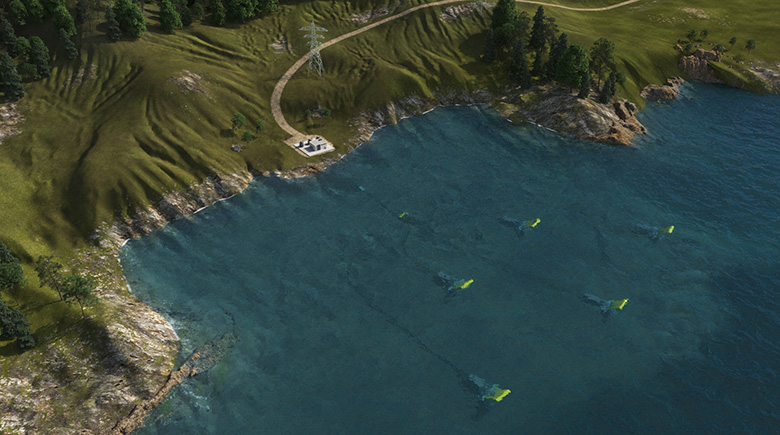
REDi Island's Surge Flap Sands. Visualization from IKM 3D
Ocean waves are not only powerful, they’re also predictable, carrying consistent and reliable amounts of energy to shorelines each year. Although wave energy varies slightly from one season to the next—in the winter waves tend to amass more power, egged on by offshore storms—this minor change matches up with seasonal dips in other more variable renewable energy resources. When wind energy and solar power wane in the winter, for example, waves can be a powerful, reliable partner, keeping the power grid humming along smoothly.
At REDi Island’s Surge Flap Sands, a wave energy farm takes advantage of the ocean’s predictable power to generate energy for the power grid. The farm is built in shallow waters and outfitted with a specific type of wave energy converter called an oscillating surge flap, which uses paddle-like flaps that sway back and forth in the ocean waves to collect clean energy.
Visit Surge Flap Sands to explore wave energy in action.
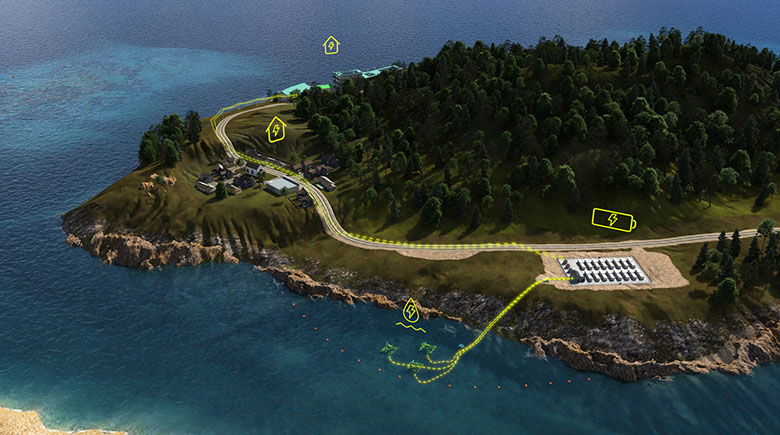
Around the world, tides carry a predictable, steady, clean source of energy through our rivers and oceans. In the United States, tidal energy has the potential to power up to 21 million homes (about 15% of the country's total number of houses).
Tidal energy technologies, such as those deployed at Tidal Town, could be valuable for coastal and remote communities. Often more isolated from the national grid, these communities tend to pay higher energy prices and experience more extreme weather-induced outages. Soon, tidal turbines could generate local, affordable, clean electricity for such isolated communities or even help decarbonize the nation's power grid.
Visit Tidal Town to learn more.
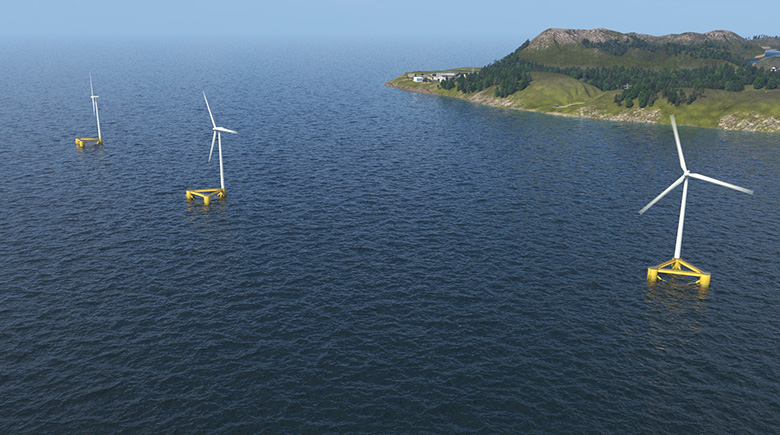
REDi Island's Windy Way. Visualization from IKM 3D
Marine energy, which includes energy generated from ocean waves, currents, tides, and even shifting temperatures and pressure, isn’t the only kind of offshore energy. Far offshore, where hills and trees can’t impede winds, they often carry huge amounts of energy.
At Windy Way, REDi Island’s residents installed three floating offshore wind turbines. The island’s turbines are not installed on the ocean floor; instead, they float on platforms so they can reach deeper waters and more powerful winds far offshore.
To achieve a 100% clean energy future, the world needs the entire renewable energy team to work together. Offshore wind energy can pair up with marine energy to help communities, and the world, achieve their clean energy goals.
Visit Windy Way to learn how offshore wind energy can help power a clean energy future.
Resources
Explore additional marine energy educational resource materials.
Explore additional hydropower educational resource materials.
Follow the #REDiIsland hashtag on social media.
Stay up to date on the REDi Island project by subscribing to NREL's water power newsletter, The Current.
Contact
Share
Last Updated Jan. 10, 2025
